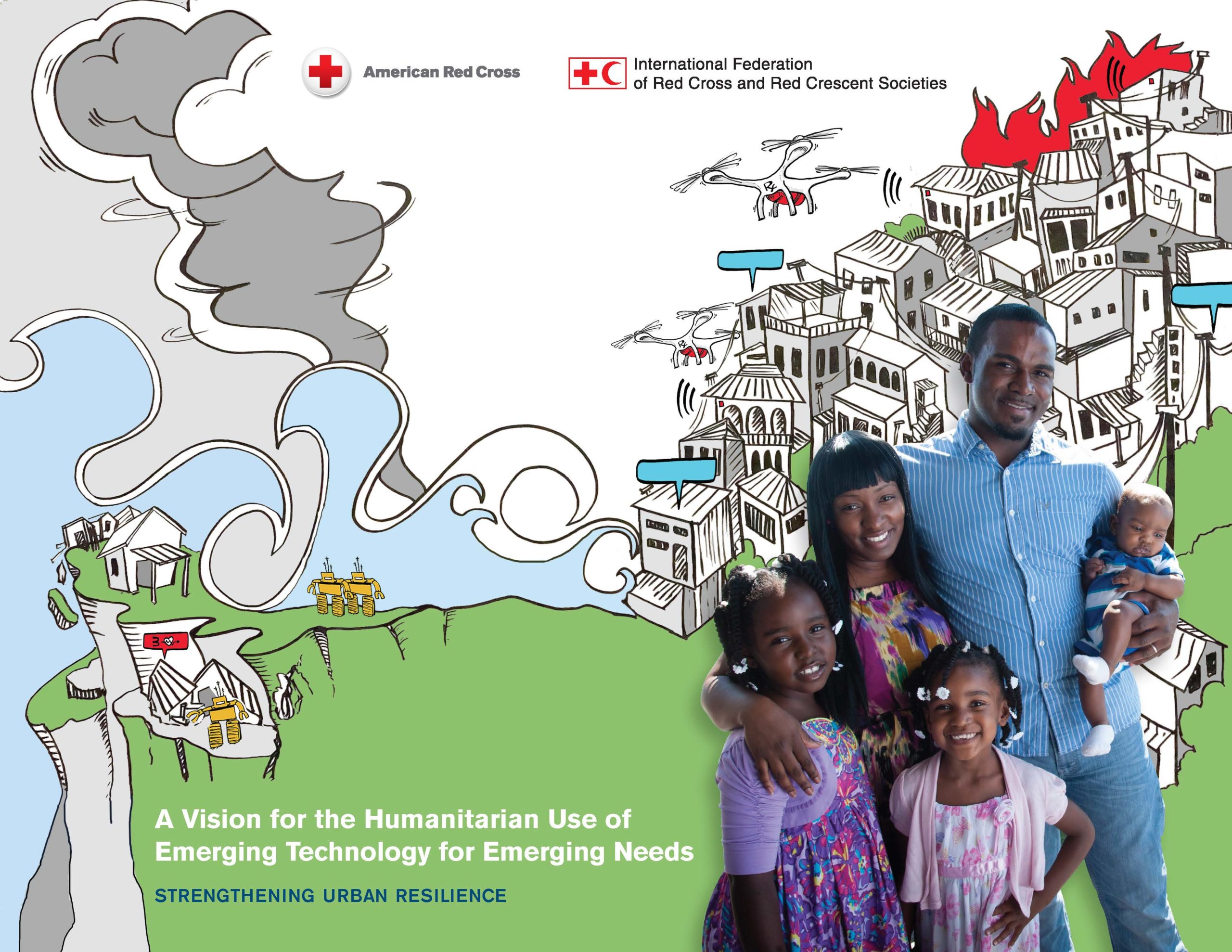A Vision for the Humanitarian Use of Emerging Technology for Emerging Needs

This 36-page report reviews the global dialogue series organized by the American Red Cross and International Federation of Red Cross and Red Crescent Societies, defines the Eight Criteria for Resilience-Strengthening Solutions, announces plans to test four experimental technologies with partners this year, and makes five key recommendations based on community-level requests and our humanitarian expertise.
The publication explains how we chose the initial eight emerging technologies, the many ways they can help urban dwellers cope with emergencies and how we arrived at the following four priorities for 2015-2016:
- Wearable devices for providing early warning, supporting search and rescue, and reconnecting families
- Unmanned aerial vehicles for temporarily restoring communications networks and delivering critical relief items, such as medicines, post disaster
- Smart home sensor networks for sensing and reporting fires in informal settlements/slums
- Biometric scanners in ATM-like kiosks for restoring lost documentation to prove identity, access assistance and reconnect families
http://www.tech4resilience.blogspot.com
http://www.tech4resilience.blogspot.com
